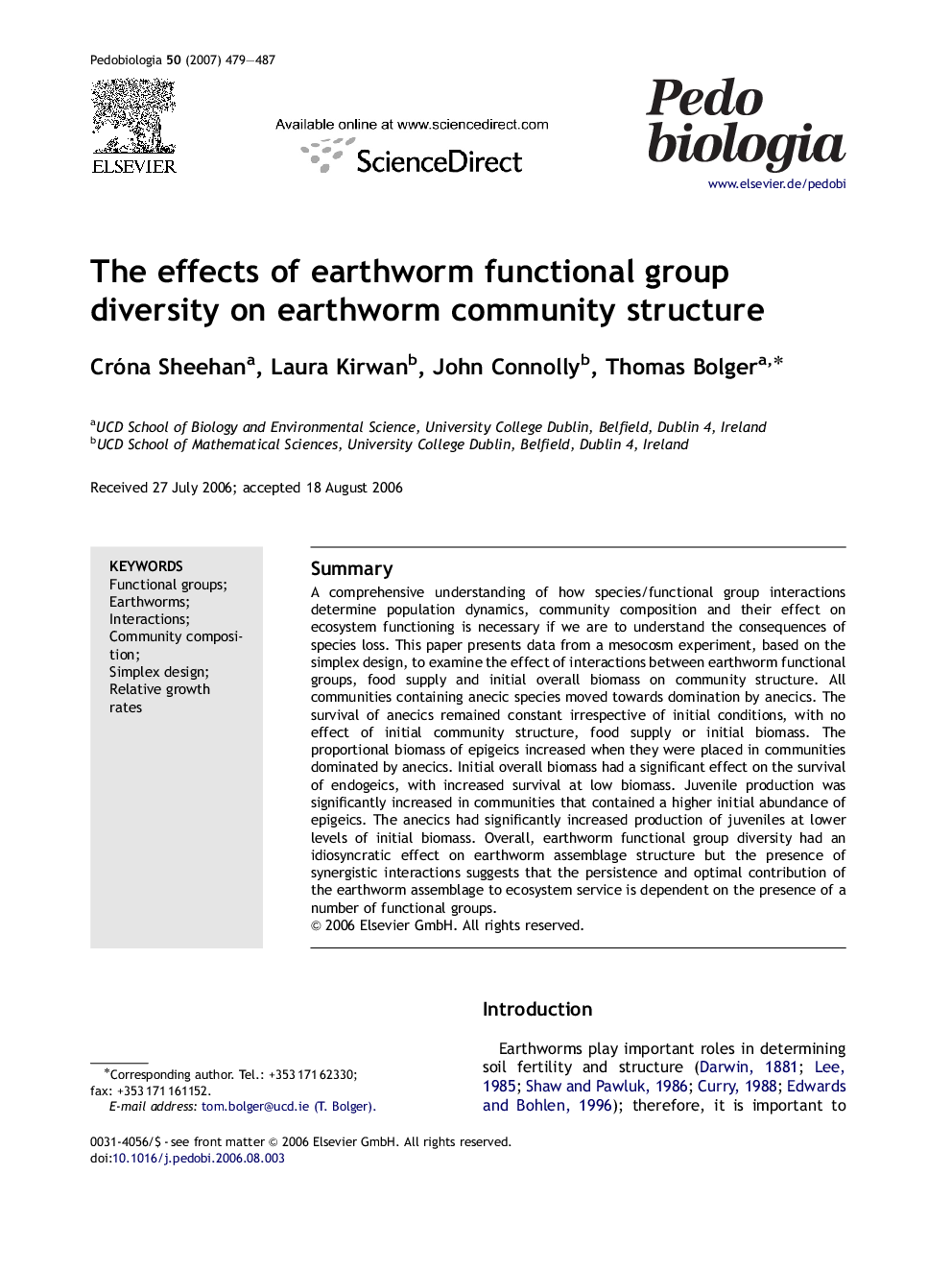| Article ID | Journal | Published Year | Pages | File Type |
|---|---|---|---|---|
| 2061407 | Pedobiologia | 2007 | 9 Pages |
SummaryA comprehensive understanding of how species/functional group interactions determine population dynamics, community composition and their effect on ecosystem functioning is necessary if we are to understand the consequences of species loss. This paper presents data from a mesocosm experiment, based on the simplex design, to examine the effect of interactions between earthworm functional groups, food supply and initial overall biomass on community structure. All communities containing anecic species moved towards domination by anecics. The survival of anecics remained constant irrespective of initial conditions, with no effect of initial community structure, food supply or initial biomass. The proportional biomass of epigeics increased when they were placed in communities dominated by anecics. Initial overall biomass had a significant effect on the survival of endogeics, with increased survival at low biomass. Juvenile production was significantly increased in communities that contained a higher initial abundance of epigeics. The anecics had significantly increased production of juveniles at lower levels of initial biomass. Overall, earthworm functional group diversity had an idiosyncratic effect on earthworm assemblage structure but the presence of synergistic interactions suggests that the persistence and optimal contribution of the earthworm assemblage to ecosystem service is dependent on the presence of a number of functional groups.
